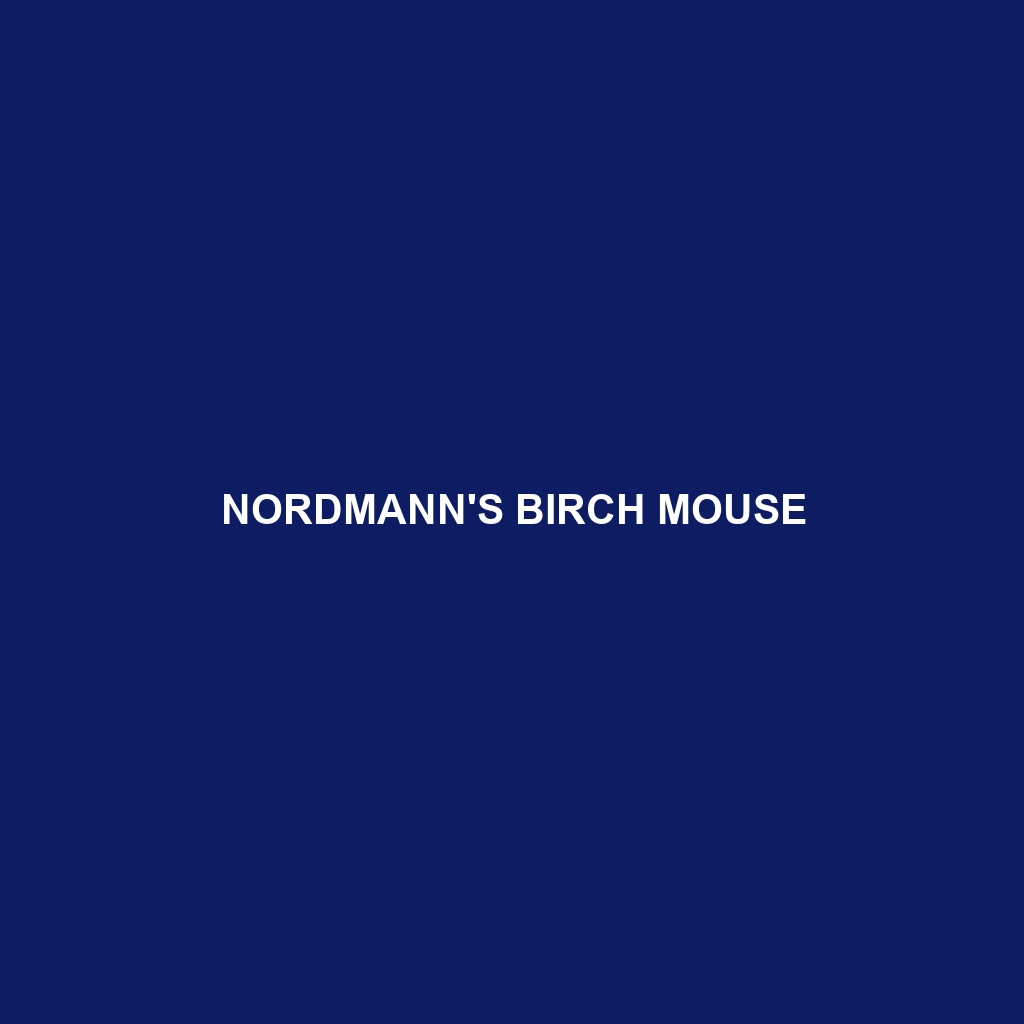Nordmann’s Birch Mouse (Scientific Name: Dryomys nitedula)
Common Name: Nordmann’s Birch Mouse
Scientific Name: Dryomys nitedula
Habitat
The Nordmann’s Birch Mouse primarily inhabits the temperate and boreal forests of Eastern Europe and parts of Asia. It is frequently found in areas with abundant birch and conifer trees, as well as dense underbrush that provides shelter and food sources. Key regions include the mountainous areas of the Caucasus, as well as parts of western Siberia and the Carpathian Mountains.
Physical Characteristics
Nordmann’s Birch Mouse is a small rodent, typically measuring between 8 to 12 centimeters in body length, with an additional tail length of approximately 7 to 10 centimeters. This species is characterized by its soft, dense fur that displays a grayish-brown coloration with lighter underparts. Its large eyes and whiskers are notable features that enhance its nocturnal activities. The mice also have a slightly rounded body shape, which aids in their agile movements.
Behavior
Nordmann’s Birch Mouse exhibits nocturnal behavior, being most active during the night. During the day, they typically seek shelter in burrows or tree hollows. These mice are proficient climbers, allowing them to escape predators and forage for food. They communicate through a series of chirps and squeaks and are known to be territorial, often marking their area with scent.
Diet
The diet of the Nordmann’s Birch Mouse primarily consists of seeds, nuts, fungi, and various plant materials. In the autumn months, they actively forage and store food to prepare for winter, showcasing their strong foraging instincts and feeding habits. Their preference for birch seeds is particularly noteworthy, making them integral to seed dispersal in their environment.
Reproduction
The breeding season for Nordmann’s Birch Mouse typically occurs between late spring and early autumn. After a gestation period of about 21 to 25 days, females give birth to litters of up to six offspring. Young mice are born blind and hairless but develop rapidly, weaning within three weeks. Parental care is provided by the mother, while males often play little to no role in rearing young.
Conservation Status
Currently, the Nordmann’s Birch Mouse is classified as vulnerable due to habitat loss and environmental changes. Deforestation and urbanization are significant threats to their natural habitats, impacting their population numbers. Conservation efforts are essential to protect this species and its environment.
Interesting Facts
One fascinating aspect of the Nordmann’s Birch Mouse is its exceptional climbing ability, which allows it to navigate both the ground and the treetops in search of food and shelter. Additionally, they are known to engage in playful behavior, often seen chasing each other up and down trees.
Role in Ecosystem
The Nordmann’s Birch Mouse plays a crucial role in its ecosystem as both a consumer and a prey species. By feeding on seeds and nuts, they assist in seed dispersal, promoting plant diversity. Furthermore, as a food source for larger predators, they contribute to the biological balance within their habitat, making them an important component of the forest ecosystem.
